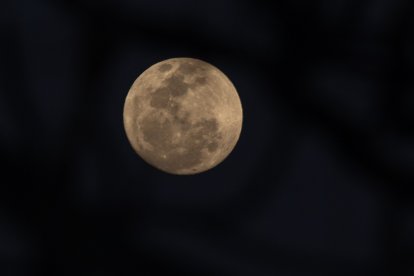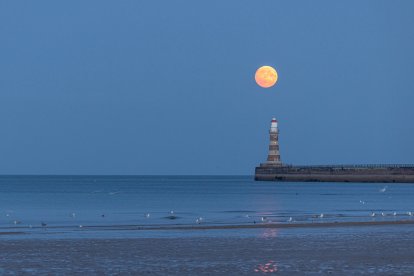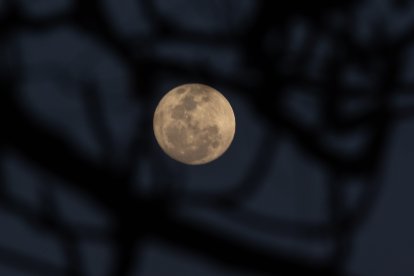The blue supermoon, an astronomical phenomenon that can be seen on Monday night
The celestial event is part of a quartet of supermoons that will take place in the coming months. The next one, scheduled for the night of September 18, will also be accompanied by a partial eclipse.

Image of the blue supermoon on Sunday, Aug. 18, 2024, in Rio de Janeiro, Brazil.
Beginning this Monday night until Wednesday night it will be possible to observe the first of the blue supermoons that will be visible in the next four months.
The space phenomenon, which could be glimpsed this Sunday nearly formed in places like Rio de Janeiro (Brazil) and Sunderland (United Kingdom), will allow the moon to look much larger and up to 30% brighter, as explained by the NASA.

99% of the Sturgeon moon could be seen on Sunday, August 18, at Roker Lighthouse in Sunderland, UK.
The supermoon will also coincide with the "Sturgeon Moon," the name given by astronomers to the full moon that occurs in the month of August and is named so because the moon's nighttime brightness once favored sturgeon fishing.

Image of the Sturgeon Moon, the name given to the August full moon, in Rio de Janeiro, Brazil.
This blue supermoon will also be the first of four astronomical phenomena to take place in the coming months. Other blue supermoons are also expected to occur in September, October and November.
The September one, scheduled for September 18, will also coincide with a partial lunar eclipse that will be especially visible in the Americas, Africa and Europe.

Image of the Sturgeon Moon over a lighthouse in the United Kingdom.
Following the September supermoon, the next one is expected to be visible on October 17. This will also be the largest and fullest that can be observed in 2024, according to the head of NASA's Planetary Geology, Geophysics and Geochemistry Laboratory, Noah Petro, reported by CNN.
The scientist explained that this optical perception will be due to the moon's distance from Earth. "The moon will actually be about 100 kilometers (62 miles) closer to the Earth on October 17," he said while reporting that the last blue supermoon that will be visible this year will be during the night of November 15.

The first blue supermoon of this year, visible from Rio de Janeiro (Brazil), coincides with the 'Sturgeon Moon'.
RECOMMENDATION





















